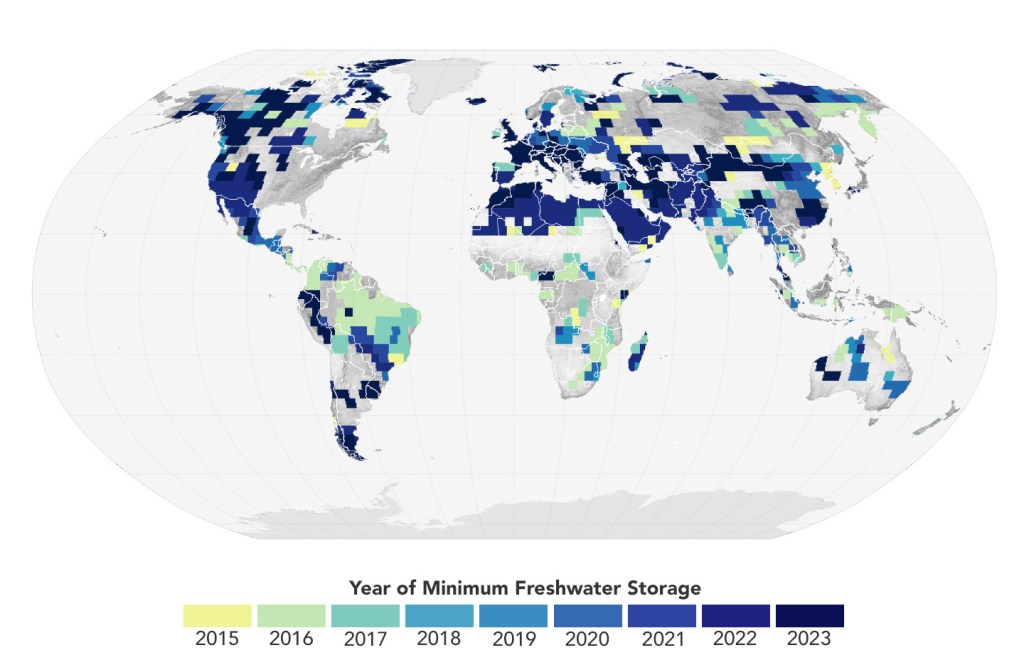The decline in global freshwater reported in the study began with a massive drought in northern and central Brazil, and was followed shortly by a series of major droughts in Australasia, South America, North America, Europe, and Africa. Warmer ocean temperatures in the tropical Pacific from late 2014 into 2016, culminating in one of the most significant El Niño events since 1950, led to shifts in atmospheric jet streams that altered weather and rainfall patterns around the world. However, even after El Niño subsided, global freshwater failed to rebound. In fact, Rodell and team report that 13 of the world’s 30 most intense droughts observed by GRACE occurred since January 2015. Rodell and colleagues suspect that global warming might be contributing to the enduring freshwater depletion.
Related Posts

NASA’s Hubble Watches ‘Spoke Season’ on Saturn
The Hubble Space Telescope is a project of international cooperation between NASA and ESA. NASA’s Goddard Space Flight Center in…

NASA Prepares Artemis II Moon Rocket Core Stage for Final Assembly Phase
NASA and industry partners Aerojet Rocketdyne and Boeing have installed all four RS-25 engines onto the SLS (Space Launch System)…

From childhood stargazing to building a lunar space station
Even growing up in the heart of Washington, D.C., stargazer Oliver Ortiz felt a connection to space from a young…
